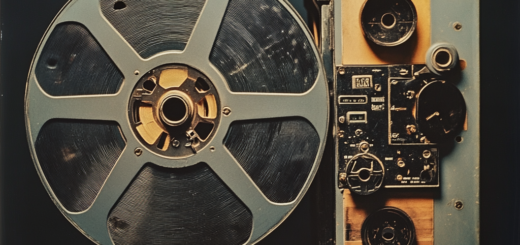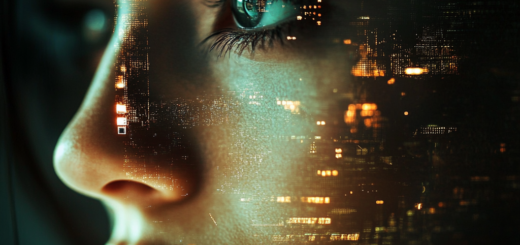Places where art comes to life: from museums to street galleries
Museums: repositories of cultural heritage
Museums play a key role in the preservation of cultural heritage and the presentation of art. They are not only a place to store works of art, but also cultural centers that attract public attention, inspire and educate. Museums provide access to artistic masterpieces of the past and present, as well as create a platform for the formation of new cultural and intellectual ties.
Modern museums are not limited to traditional forms of exhibition only. With the development of digital technologies and interactive formats, many museums are introducing innovations such as virtual tours, augmented reality, and interactive installations. These changes make art more accessible by allowing people to interact with the artwork on a deep level, creating a new, more engaged experience for viewers.
Galleries and exhibition spaces
Galleries and exhibition spaces are becoming important not only as platforms for displaying art, but also as spaces for communication, exchange of ideas and cultural dialogue. Modern galleries can be either classical, with traditional paintings and sculptures, or alternative, where exhibitions are held in non-standard places or in the format of multimedia art projects. Today, galleries actively influence the development of the arts, supporting not only venerable artists, but also young ones, giving them the opportunity to express themselves.
These places become platforms for experiments, where the viewer can immerse himself in the world of art and evaluate works from different points of view. Exhibitions often become important events that influence public sentiment, actualizing social issues and cultural values. Galleries are also becoming important cultural exchange centers. Local and international artists can meet in these spaces, and viewers can see different approaches and styles of art, which contributes to a better understanding of cultural differences and common themes.
Street art: from graffiti to large-scale installations
Street art has long been an integral part of urban culture. From graffiti to large installations on buildings, the streets have become not just a place to move, but also an arena for creativity. Street artists do not limit themselves to traditional canvases — they use any available surface, creating bright and sometimes provocative works that instantly attract the attention of passers-by. Every year, street art becomes more recognized, going beyond the “unofficial” and being accepted in the world’s galleries and museums. This art changes the perception of urban space, turning ordinary streets and walls of buildings into art objects.
Street artists often use their works to protest, support social movements, or convey important public messages to viewers. This makes street art not only an artistic expression, but also an important social force capable of influencing public sentiment and the changing political atmosphere.
Interactive and immersive exhibitions
Technology plays an important role in the transformation of art, creating new formats of interaction with works. Interactive and immersive exhibitions are examples of how viewers can become a part of art, rather than just watching it. These exhibitions, unlike traditional ones, involve the active participation of viewers, who can influence how the exhibition develops, changing what is happening through actions, gestures or interaction with digital elements.
Such exhibitions can include virtual or augmented reality, where the viewer becomes a part of art, immersing himself in created digital worlds. These art forms create new opportunities for viewers to truly experience works of art, becoming not only viewers, but also active participants. It also opens up a new level of creative freedom for artists, giving them the opportunity to create unique experiences and interact with the audience on a deep level.
Public spaces and art projects
Public spaces such as new parks, squares and streets are becoming an arena for art projects that change the urban landscape and create new meanings for public spaces. Art goes beyond museums and galleries to interact with the city and its inhabitants. Sculptures, installations, street exhibitions — all these art forms are becoming part of everyday life.
Such projects can be not only aesthetic, but also social, aimed at improving the quality of life in cities. For example, art installations in public places can create spaces for communication, give people the opportunity to experience new emotions and feelings. Public art projects can also be a way to draw attention to important issues such as ecology, human rights, or social justice.
The Future of Art: cross-platform projects and new approaches
The future of art is inextricably linked to the in-depth integration of digital technologies, which leads to the creation of new cross-platform projects. Art that combines a variety of media — from traditional painting to virtual reality, from cinema to digital installations — is becoming more multifaceted and accessible. The collaboration of artists and new technologies allows us to create forms of expression that previously seemed impossible.:
- Cross-platform projects will actively use the capabilities of various media and technologies.
- Blockchain, augmented reality and artificial intelligence will become an integral part of these projects.
- These innovations will open up new horizons for personalized artistic experiences.
- Artists will be able to create works of art that can be experienced not only visually, but also with the help of other sensory systems.
- New technologies will expand access to art by offering unique ways to distribute and engage viewers.
Questions and answers
Street art includes various forms of creativity such as graffiti, installations and murals that enliven urban spaces and become part of public life. This art is often used to express social and political messages and plays an important role in shaping urban identity.
Technologies such as virtual reality, augmented reality, and interactive exhibitions allow viewers to become participants in works of art. This creates a new experience of interacting with art that would not be possible in traditional formats.
Public art projects transform the urban landscape, making it more accessible and attractive to residents. Such projects can also raise important social issues, contribute to the development of public awareness and improve the quality of life.
Immersive exhibitions involve viewers in the process of perceiving art, allowing them to become part of the exhibition. This may include the use of virtual reality, interacting with objects and digital installations, which is significantly different from traditional art observation.
In the future, art will continue to evolve using new technologies and cross-platform approaches, including virtual reality, blockchain and other innovations, which will open up new opportunities for artists and viewers.



